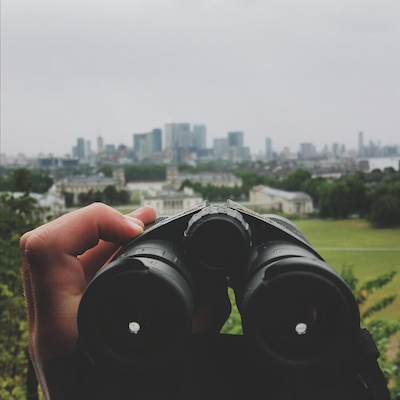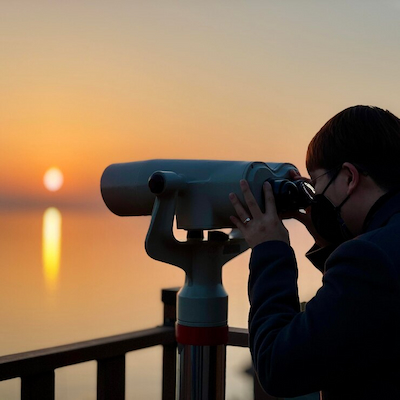
Deep sky observation is one of the most captivating activities for astronomy and nature lovers. With binoculars, exploring the universe becomes an accessible and exciting journey. Binocular deep sky observation techniques allow astronomy enthusiasts to connect with the wonders of the cosmos by viewing galaxies, nebulae, and star clusters millions of light-years away. The night sky has fascinated humanity for millennia, and astronomical observation continues to evolve.
Binoculars are an excellent tool for beginners. They offer portability, ease of use, and a wide field of view, allowing observers to take in the vastness of the sky. Unlike telescopes, which can be complex and require more technical knowledge, binoculars are accessible and practical, making deep sky observation an activity people of all ages and experience levels can enjoy.
How Binocular Deep Sky Observation Techniques Work
Binocular deep sky observation techniques rely on optical principles that allow the visualization of distant celestial objects. Binoculars use two lenses—one for each eye—to create a three-dimensional image. This setup provides a richer and more detailed view, allowing the observer to appreciate the depth and texture of celestial bodies.
The light from stars and galaxies is often faint. Binoculars are designed to gather more light than the naked eye, which is crucial for observing dimmer objects. The aperture size of binoculars, measured in millimeters, determines how much light they can collect. Larger apertures are more effective for deep sky observation because they capture more light and reveal more details.
Stabilizing the image is also important. Hand tremors can make it difficult to observe fine details. To reduce this effect, using a tripod or stable mount is recommended. This improves image clarity and allows for prolonged viewing of subtle objects.
Star maps and astronomy apps are essential tools for locating celestial objects. These resources guide observers in finding nebulae, clusters, and galaxies, enhancing both the educational and experiential aspects of observation.

Advantages of Using Binocular Deep Sky Observation Techniques
One major advantage is accessibility. Binoculars are generally lighter and more portable than telescopes, making them convenient for use anywhere—from parks and mountains to backyards. This mobility allows more people to engage in astronomy regardless of location.
Cost is another benefit. Binoculars are typically more affordable than deep-sky telescopes, allowing newcomers to explore the night sky without a significant financial investment. There are many options on the market to suit different budgets and needs.
Binoculars also provide a wider field of view, ideal for observing large sky objects. This is especially helpful when viewing nebulae and star clusters, which can be challenging to see in detail through narrower telescope views.
Finally, these techniques foster a deeper emotional connection with the universe. Observing the night sky can be meditative and inspiring, encouraging reflection on our place in the cosmos. This emotional connection often inspires a lasting interest in science and space exploration.
Tips for Making the Most of Your Binocular Stargazing Sessions
Getting the best out of your deep sky observation sessions with binoculars involves more than just pointing them at the sky. A few thoughtful preparations and habits can significantly enhance your experience.
-
Plan your session in advance: Check moon phases and weather forecasts. A moonless, clear night in a dark-sky area offers the best conditions.
-
Allow your eyes to adapt to the dark: It takes 20–30 minutes for your eyes to fully adjust. Avoid bright lights, and use red flashlights to preserve night vision.
-
Dress appropriately: Stargazing can mean long periods outdoors. Dress in layers and bring blankets or a reclining chair for comfort.
-
Use both hands or a mount: Stability is key. Rest your elbows on something solid, or use a tripod adapter to mount your binoculars.
-
Keep a logbook: Record what you observe — the objects, sky conditions, and your impressions. Over time, this builds a rewarding record of your journey through the stars.
Binocular astronomy isn’t just about what you see — it’s about the connection you build with the night sky. With these tips, your sessions will be more productive, comfortable, and immersive.
Common Deep Sky Objects You Can See with Binoculars
One of the most rewarding aspects of binocular astronomy is discovering just how much of the deep sky you can observe without needing a telescope. While some objects may appear faint or diffuse, many are surprisingly accessible — even to beginners.
Among the most popular targets are:
-
The Andromeda Galaxy (M31): The nearest spiral galaxy to our own, visible as a faint, elongated glow in dark skies.
-
The Pleiades (M45): A stunning open cluster of young stars, best appreciated with the wide field of view binoculars provide.
-
The Orion Nebula (M42): A bright nebula in the Orion constellation, where new stars are being born.
-
The Beehive Cluster (M44): A large and bright open cluster in Cancer, appearing as a sparkling group of stars.
-
The Double Cluster (NGC 869 & NGC 884): Two tightly packed star clusters in the constellation Perseus, best seen together with binoculars.
Exploring these and other objects helps you develop observing skills, recognize patterns in the night sky, and build a deeper appreciation for the vastness of the universe — all with a simple pair of binoculars.
How to Use Binocular Deep Sky Observation Techniques
- Equipment selection: Choose binoculars with at least 50 mm aperture for better light gathering. A magnification of 7x to 10x is ideal for beginners.
- Location: Find a dark site with minimal light pollution. Rural areas or dark parks are best for visibility.
- Use of star maps: Use printed star charts or astronomy apps to identify and locate celestial objects.
- Stabilization: Use a tripod or steady surface to minimize shaking and maintain image clarity.
- Focus adjustments: Ensure the binoculars are properly focused to provide a clear, sharp image.
- Patience and practice: Deep sky observation requires time and perseverance. With regular practice, locating and observing celestial objects becomes easier and more rewarding.

Did You Enjoy Learning About Binocular Deep Sky Observation Techniques?
Binocular deep sky observation techniques offer a captivating gateway into the world of astronomy. With the right combination of tools, curiosity, and dedication, anyone can begin unveiling the mysteries of the cosmos. The thrill of spotting distant galaxies, glowing nebulae, and sparkling star clusters transforms every session under the stars into a journey through time and space.
More than just a hobby, this practice fosters a deeper connection with the universe and inspires a greater appreciation for science and nature. Whether you’re gazing from your backyard or atop a mountain peak, the universe is always waiting to reveal its wonders.
If this topic sparked your curiosity, take the next step: join local stargazing groups, enroll in astronomy workshops, or participate in citizen science projects. The astronomy community is vibrant, inclusive, and eager to support your exploration. The night sky is vast, and your adventure has only just begun.
Frequently Asked Questions
What are the best binocular deep sky observation techniques?
Start with good preparation. Choose a dark and clear location. Use binoculars with the right magnification and aperture. Adjust focus and observe slowly.
How can I identify deep sky objects?
Use star maps or astronomy apps. They help locate constellations and guide you to nebulae, galaxies, and star clusters.
Why is stability important when using binoculars?
Stability prevents image shaking, which is crucial for seeing deep sky details clearly. A tripod or steady support is recommended.
Can I use binoculars to see planets?
Yes, you can! Binoculars are great for viewing planets like Jupiter and Saturn as bright points, though you won’t see much detail.
Do I need filters for binocular deep sky observation?
Filters can help improve contrast, especially when observing nebulae and other faint structures.
Can binoculars be used for astrophotography of deep sky objects?
Yes, with the right setup! While binoculars aren’t designed for traditional astrophotography, you can use a smartphone mount or a camera with a tripod to capture what you see. However, for clearer images of deep sky objects, a telescope with a camera adapter is usually more effective.

